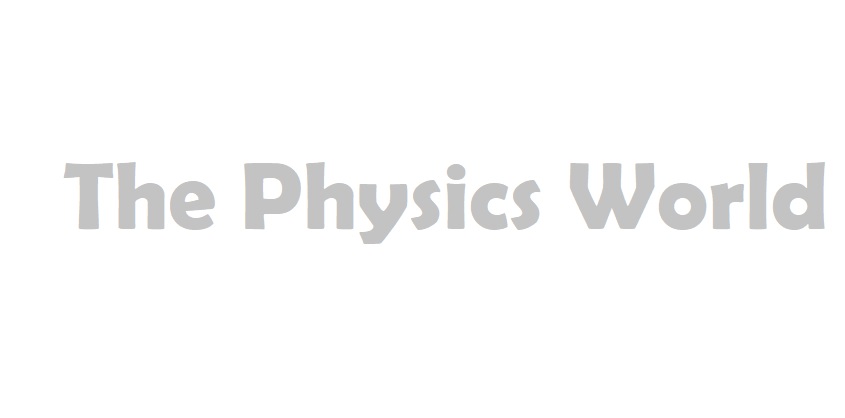Mechanics
Mechanics is a branch of physics that deals with the motion of objects and the forces that cause that motion. It involves studying how objects move and the forces that act upon them, and seeks to understand the fundamental principles that govern motion and energy.
Mechanics is divided into two main branches: classical mechanics and quantum mechanics. Classical mechanics, also known as Newtonian mechanics, is concerned with the motion of macroscopic objects and is based on the laws of motion formulated by Sir Isaac Newton. Quantum mechanics, on the other hand, deals with the behavior of subatomic particles and is based on the principles of wave-particle duality and uncertainty.
Mechanics is a fundamental field of study that has wide-ranging applications in many areas of science and engineering, from designing cars and airplanes to understanding the behavior of stars and galaxies.
Mechanical motion is understood as a change
over time in the relative position of bodies or their parts in space: for
example, the movement of celestial bodies, fluctuations in the earth's crust,
air and sea currents, the movement of aircraft and vehicles, machines and
mechanisms, deformation of structural elements and structures, movement liquids
and gases, etc.
In mechanics, interactions of bodies are
considered, the result of which are changes in the velocities of the points of
these bodies or their deformations. For example, the attraction of bodies
according to the law of universal gravitation, the mutual pressure of
contacting bodies, the effect of liquid or gas particles on each other and on
bodies moving or resting in them, etc.
When studying the movement of material bodies, he operates with a number of concepts that reflect certain properties of real bodies, for example:
Material point - an object of negligible size, having a mass. This concept can be used when the body moves forward or when the motion under study can neglect the rotation of the body around its center of mass;
- Absolutely rigid body - a body, the
distance between any two points of which does not change. This concept is
applicable when the deformation of the body can be neglected;
- A continuous variable medium - this concept
is applicable when the molecular structure of the body can be
neglected. It is used in the study of the movement of liquids, gases,
deformable solids.
Mechanics consists of the following sections:
1) Mechanics of a material point;
2) Mechanics of an absolutely rigid body;
3) Continuum mechanics, which, in turn,
includes:
i) The theory of elasticity;
ii) The theory of plasticity;
iii) Hydrodynamics;
iv) Aerodynamics;
v) Gas dynamics.
Each of the listed sections consists of
statics, dynamics and kinematics. Statics is the doctrine of the balance
of bodies under the influence of forces (Greek statos - standing).
Dynamics is the study of the movement of
bodies under the action of forces. Kinematics is the study of the geometric
properties of the motion of bodies.
In addition to the above sections of
mechanics, the theory of oscillations, the theory of stability of motion, the
mechanics of bodies of variable mass, the theory of automatic control, the
theory of impact, etc., are of independent importance.
Mechanics is closely related to other
branches of physics. Mechanics is of great importance for many branches of
astronomy, especially for celestial mechanics (the motion of the planets and
stars, etc.).
For
engineering mechanics is of particular importance. For example,
hydrodynamics, aerodynamics, dynamics of machines and mechanisms, the theory of
movement of ground, air and vehicles use the equations and methods of
theoretical mechanics.
Classical Mechanics
Classical mechanics, also known as Newtonian mechanics, is a branch of physics that deals with the motion of macroscopic objects and the forces that cause that motion. It is based on the laws of motion formulated by Sir Isaac Newton in the 17th century, which describe how the motion of an object is affected by the forces acting upon it. Some examples of classical mechanics are shown below.
The three laws of motion form the foundation of classical mechanics. The first law states that an object at rest will remain at rest, and an object in motion will continue to move at a constant velocity, unless acted upon by an external force. The second law states that the acceleration of an object is directly proportional to the net force acting upon it and inversely proportional to its mass. The third law states that for every action, there is an equal and opposite reaction.
Classical
mechanics also includes the study of energy and momentum, which are conserved
quantities that are used to describe the motion of objects. Energy can be
either kinetic (energy of motion) or potential (energy stored in an object due
to its position or configuration), and can be converted from one form to another.
Momentum is a measure of an object's motion, and is defined as the product of
its mass and velocity.
Quantum Mechanics
Quantum
mechanics is a branch of physics that deals with the behavior of matter and
energy at the atomic and subatomic level. It is a fundamental theory that
describes the behavior of particles such as electrons, protons, and photons, as
well as their interactions with electromagnetic radiation.
Quantum mechanics also includes the study of quantum states, which describe the properties of particles such as their energy, momentum, and spin. These states are represented mathematically by wave functions, which are solutions to the Schrödinger equation.
Quantum
mechanics has many practical applications, including in the development of new
technologies such as transistors, lasers, and magnetic resonance imaging (MRI).
It is also important in understanding the behavior of atoms and molecules, and
is used in fields such as chemistry and materials science. Additionally,
quantum mechanics is a fundamental theory that is used to understand the
behavior of matter and energy at the most fundamental level, and is a key area
of research in modern physics.









0 Comments